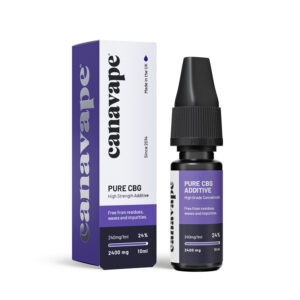
In recent years, the world of medical cannabis has expanded beyond the well-known compounds like THC and CBD, leading us to explore lesser-known cannabinoids, such as CBG.
Understanding CBG medical is essential for anyone looking to grasp the full potential of cannabis-derived treatments, as this compound is gaining recognition for its therapeutic possibilities.
CBG, or cannabigerol, is often referred to as the ‘mother of all cannabinoids’ due to its role in producing other cannabinoids.
This guide aims to demystify what is CBG medical by breaking down its uses, benefits, and how it differs from its more famous counterparts.
Whether you are new to the conversation or seeking to deepen your knowledge, this article will provide a clear and insightful introduction to the world of CBG.

Cannabigerol, or CBG, is becoming a focal point in medical cannabis discussions due to its unique properties and potential health benefits.
This section introduces CBG medical by delving into what it is and its growing significance in healthcare.
CBG, or cannabigerol, is a non-psychoactive cannabinoid found in the cannabis plant.
Often termed as the mother of all cannabinoids, CBG is a precursor to other well-known cannabinoids like THC and CBD.
In its acidic form, CBGA, it breaks down to form these compounds.
Unlike THC, CBG does not produce a high.
This makes it an attractive option for those looking for therapeutic benefits without the psychoactive effects.
Its extraction, however, is challenging because it is present in smaller quantities compared to other cannabinoids.
CBG medical refers to the utilisation of CBG for therapeutic purposes.
Recent studies suggest its potential in treating various conditions due to its anti-inflammatory and neuroprotective properties.
As research expands, the understanding of what is CBG medical continues to grow, highlighting its potential in modern medicine.
The role of CBG in healthcare is gaining momentum as more research underscores its potential benefits.
As a non-psychoactive compound, it offers a promising alternative for patients seeking relief without the euphoria associated with THC.
CBG’s anti-inflammatory properties make it a candidate for treating conditions like inflammatory bowel disease.
Its ability to act on specific receptors may provide neuroprotective benefits, offering potential in managing neurodegenerative diseases such as Huntington’s disease.
Furthermore, CBG may have antibacterial properties.
Some studies suggest it could be effective against antibiotic-resistant bacteria, making it a point of interest in combating superbugs.
The future of CBG in healthcare looks promising as research continues to explore its myriad potential applications.
Understanding how CBG stacks up against other cannabinoids is crucial for appreciating its unique benefits.
This section will compare CBG with CBD and highlight what makes CBG stand out.
CBG and CBD are both non-psychoactive cannabinoids, but they differ in how they interact with the body.
The table below outlines some key differences between the two:
| Feature | CBG | CBD |
|---|---|---|
| Psychoactivity | Non-psychoactive | Non-psychoactive |
| Receptor Interaction | Binds directly to CB1 and CB2 receptors | Indirectly influences CB1 and CB2 receptors |
| Abundance in Cannabis | Less abundant | More abundant |
| Extraction Complexity | More complex | Less complex |
While both offer therapeutic benefits, CBG’s direct interaction with cannabinoid receptors suggests potential for targeted therapies, particularly in neuroprotection and mood regulation.
CBG offers distinct benefits that set it apart from other cannabinoids.
Its potential neuroprotective and anti-inflammatory properties make it particularly appealing for certain medical applications.
These unique attributes highlight what is CBG medical and its potential role in advancing cannabinoid-based therapies.
Exploring the health benefits of CBG reveals its potential in managing a variety of conditions.
This section will cover its therapeutic uses and its role in treating chronic illnesses.
CBG is emerging as a versatile compound with various therapeutic applications. Its ability to interact with different receptors suggests a wide range of uses.
These potential uses reinforce the importance of understanding what is CBG medical and its applications in holistic healthcare approaches.
CBG’s therapeutic properties make it a candidate for treating chronic conditions.
Its anti-inflammatory and neuroprotective effects are particularly noteworthy.
These applications highlight CBG’s potential in offering relief for chronic conditions, underscoring the significance of ongoing research.
Knowing how to appropriately use CBG is crucial for ensuring its benefits are maximised.
This section provides insights into recommended dosages and methods of consumption.
Determining the right dosage of CBG can vary based on individual needs and conditions. Here’s a general guide:
While there are no universal dosage guidelines, these steps help ensure safe and effective use of CBG medical.
There are several ways to consume CBG, each offering different benefits and effectiveness:
Choosing the right method depends on personal preference and specific medical needs, enabling individuals to make informed decisions about using CBG medical.
The future of CBG in medicine appears promising as research and development continue to unveil its potential benefits.
This section explores ongoing research and CBG’s expanding role in healthcare.
Research on CBG is still in its early stages, but it is rapidly expanding.
Studies are exploring its potential uses in various medical fields.
These research initiatives are paving the way for a deeper understanding of what is CBG medical and its future applications.
CBG’s role in healthcare is set to grow as awareness and research increase.
Its potential applications across various medical fields suggest a bright future.
The expanding role of CBG signifies a shift towards exploring diverse cannabinoid therapies in modern medicine.
You can find products containing CBG here on the Canavape shop where we specialise in Cannabigerol focused products in addition to CBD.